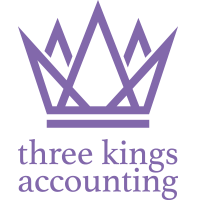Alongside the changes from April 2015 to the access of defined contribution pension funds, significant changes were made to the income tax treatment of pension funds on death. These changes significantly reduced the income tax charges.
This factsheet summarises the current rules for defined contribution schemes which may allow a pension fund to pass free of all taxes for both the estate of the deceased and for the beneficiaries of the pension fund.
IHT and pension funds
Pension death benefits may be subject to inheritance tax (IHT). This will be the case for example if the member has control over who the beneficiaries will be as HMRC will take the view that essentially the death benefits form part of the member’s estate for IHT.
Many schemes though do not give members the choice and all death benefits are paid at the discretion of the scheme administrator. This means they will be free of IHT. Of course, the administrator will want to pay out according to the member’s wishes so it is important that a member makes a ‘letter of wishes’ to the pension provider suggesting to whom the funds should be paid.
It is worth noting that if an individual withdraws monies from their pension fund, these now comprise part of their estate and are potentially subject to IHT.
Changes announced from 6 April 2027
At Autumn Budget 2024, the government announced its intention to include in the IHT estate all unused pension funds and death benefits payable from a pension. This is a significant blow to those hoping to pass on unused funds to their family. If this is of relevance to you please contact us for a review of your options.
Income tax charges on pension funds
Deaths under age 75
When an individual dies under the age of 75, their defined contribution pension fund can pass income tax free, whether it is in a drawdown account or untouched to any person. This includes a trust.
The fund can be paid out as a lump sum to a beneficiary or taken out by the beneficiary through a ‘flexi-access drawdown account’.
This tax treatment applies to pension funds which do not exceed the Lump Sum and Death Benefit allowance (LSDBA) which is set at £1,073,100. Excess amounts will be chargeable on the beneficiaries when they access the funds at their marginal rate of income tax.
For this beneficial treatment to apply, it is critical that the beneficiary or beneficiaries are designated within two years of the death of the individual otherwise, any lump sum payments made after the two years will be taxed at the recipient’s marginal rate of income tax.
Deaths from age 75
Those aged 75 or over when they die will be able to pass their defined contribution pension fund to any beneficiary who will then be able to draw down on it as income or as a lump sum at their marginal rate of income tax. Alternatively, the benefits can be paid as a lump sum to a trust with a 45% tax charge.
Given the changes to income tax treatment from age 75, it may be appropriate to consider withdrawing and using the tax free cash before reaching that age.This is particularly relevant now that it is also intended to include unused pension funds at death for IHT purposes from 6 April 2027. Specific pensions advice should always be undertaken before undertaking any withdrawals. This advice should be from an FCA regulated financial adviser.
Tax treatment of inherited annuities
Beneficiaries of individuals who die under the age of 75 with a joint life or guaranteed term annuity are able to receive any future payments from such policies tax free. If the individual dies aged 75 or over beneficiaries can receive payments at their marginal income tax rate. These annuities are generally already within the scope of IHT on the deceased’s death.
How we can help
The impact of the current beneficial tax treatment of pension funds on death has in recent times turned traditional IHT planning on its head. However, the planned inclusion of unused funds and death benefits payable for IHT from April 2027 means those affected will need to review their retirement and estate planning strategies. Please do contact us for guidance on the options available and the effect on your current IHT plans.
Professional advice is always recommended before actions are taken in respect of IHT or pensions planning.


